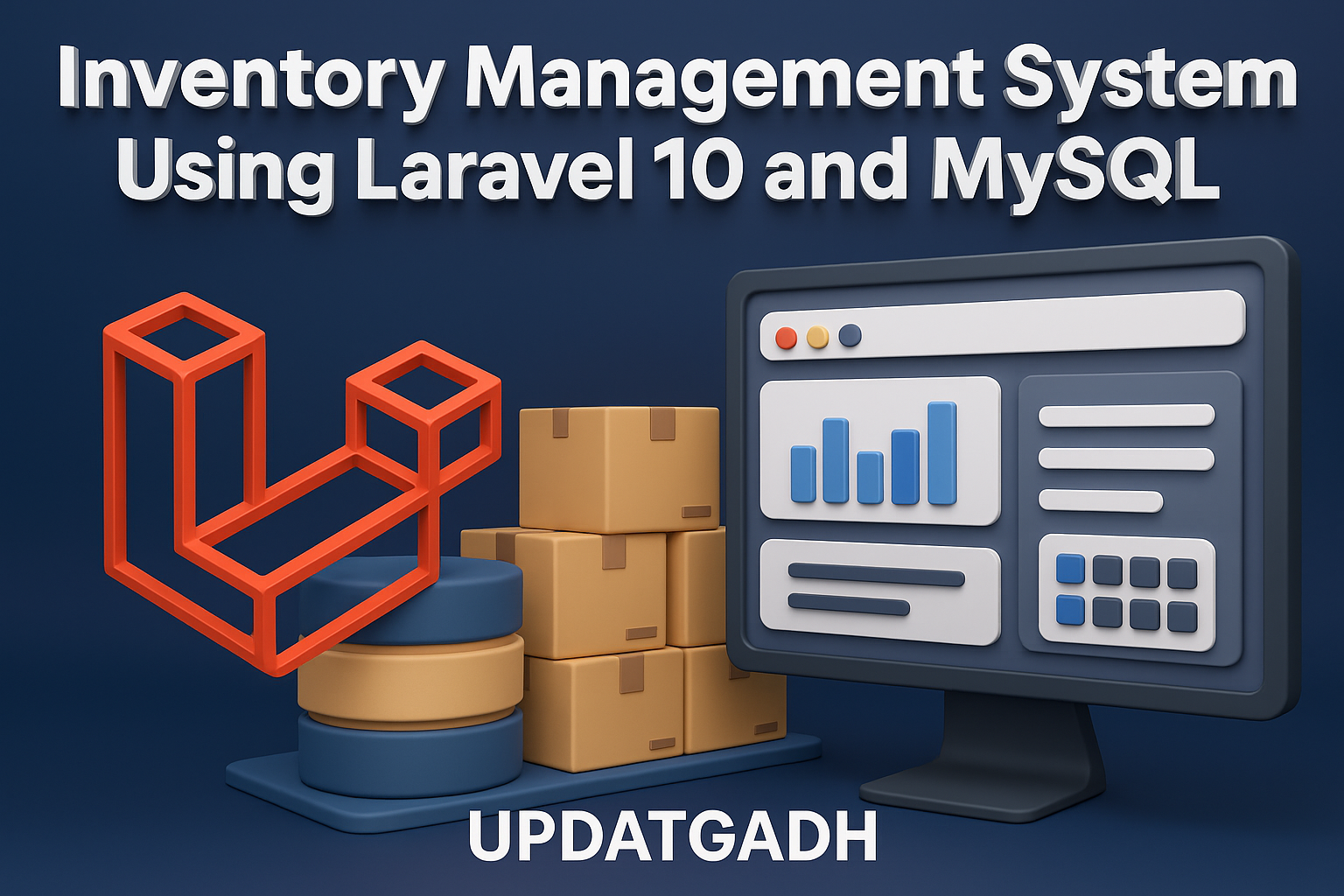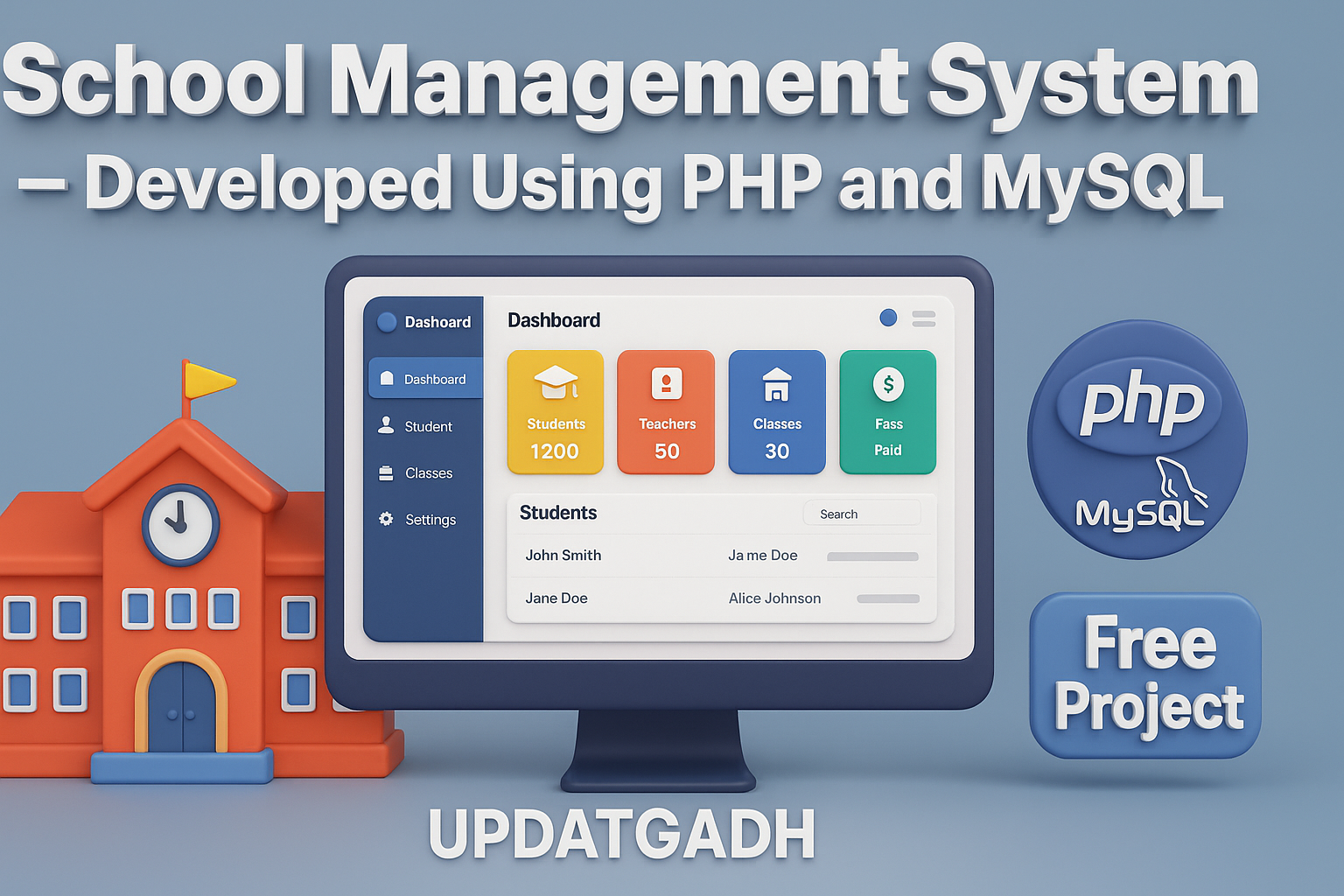
College Management System using Java and MYSQL Free Source Code
Introduction
In today’s educational landscape, managing a college efficiently requires more than just pen and paper. With the ever-growing student base, diverse courses, and administrative needs, a robust and reliable management system is essential. This is where a College Management System (CMS) comes into play, serving as a powerful tool to streamline all the administrative tasks, reduce paperwork, and improve overall efficiency.
College Management System using Java
A software program called a College Management System is made to oversee different administrative and scholastic tasks at an institution. From student enrollment to course management, faculty management, attendance tracking, and exam results, this system ensures that all these processes are handled seamlessly.
Key Features of the College Management System
Student Management:
- Register new students: Refers to the process of enrolling students into a system, capturing their details for academic and administrative purposes.
- Update student details: Involves modifying or correcting existing student information in a system, ensuring records are accurate and up-to-date.
- View all students: Allows administrators or faculty to access a complete list of enrolled students, displaying their details within the system.
- Delete student records: Involves removing a student’s information from the system, ensuring that their data is no longer accessible or stored.
Course Management:
- Add new courses: Refers to the process of creating and including new academic courses in the system, making them available for enrollment.
- Update course details: Involves modifying or revising existing information about a course in the system, such as its description, schedule, or instructor.
- View all courses: Allows users to access a comprehensive list of all available courses in the system, displaying their details for reference.
- Delete courses: Involves removing a course from the system, ensuring it is no longer available for enrollment or reference.
Faculty Management:
- Register new faculty members: Involves enrolling new staff into the system, capturing their personal and professional details for administrative purposes.
- Update faculty details: Involves modifying or revising information about faculty members in the system, such as contact information, qualifications, or department assignments.
- View all faculty members: Allows users to access a complete list of faculty, displaying their details and roles within the system for easy reference.
- Delete faculty records: Involves removing a faculty member’s information from the system, ensuring their data is no longer stored or accessible.
Attendance Management:
- Mark student attendance: Involves recording students’ presence or absence for each class session, ensuring accurate tracking of their participation and helping to monitor their engagement and adherence to course schedules.
- View attendance records: Allows users to access detailed logs of student attendance, showing their presence or absence for each class session over time for monitoring and reporting purposes.
Result Management:
- Add exam results: Involves entering and recording students’ scores and grades from exams into the system, updating their academic performance records for review and analysis.
- View student results: Allows users to access and review individual students’ exam scores and grades, providing insights into their academic performance and progress.
- Complete Python Course : Click here
- Free Notes :- Click here
- New Project :-https://www.youtube.com/@Decodeit2
- Java Projects – Click here
Benefits of Using a College Management System
- Efficiency: Automates routine tasks, reducing the time and effort needed to manage academic and administrative activities.
- Accuracy: Minimizes errors that are common in manual processes, ensuring data accuracy and consistency.
- Accessibility: Offers administrators, teachers, and students simple access to information through a single, centralized platform.
- Scalability: Designed to handle the growing needs of a college, including the addition of new students, courses, and faculty members.
- Security: Ensures that sensitive data, such as student records and exam results, is stored securely and can only be accessed by authorized users.
Tools & Technologies
- Programming Language: Java
- Database: MySQL
- IDE: NetBeans/Eclipse (Optional)
- JDBC (Java Database Connectivity): In order to link MySQL with Java
Step 1: Set up the MySQL Database
First, you need to create a MySQL database and tables to store data for students, courses, faculty, and so on.
CREATE DATABASE CollegeDB;
USE CollegeDB;
-- Table for students
CREATE TABLE Students (
student_id INT PRIMARY KEY AUTO_INCREMENT,
first_name VARCHAR(50),
last_name VARCHAR(50),
dob DATE,
gender VARCHAR(10),
email VARCHAR(100),
phone_number VARCHAR(15)
);
-- Table for courses
CREATE TABLE Courses (
course_id INT PRIMARY KEY AUTO_INCREMENT,
course_name VARCHAR(100),
course_code VARCHAR(10),
credit_hours INT
);
-- Table for faculty
CREATE TABLE Faculty (
faculty_id INT PRIMARY KEY AUTO_INCREMENT,
first_name VARCHAR(50),
last_name VARCHAR(50),
department VARCHAR(50),
email VARCHAR(100),
phone_number VARCHAR(15)
);
-- Table for attendance
CREATE TABLE Attendance (
attendance_id INT PRIMARY KEY AUTO_INCREMENT,
student_id INT,
course_id INT,
attendance_date DATE,
status VARCHAR(10),
FOREIGN KEY (student_id) REFERENCES Students(student_id),
FOREIGN KEY (course_id) REFERENCES Courses(course_id)
);
-- Table for results
CREATE TABLE Results (
result_id INT PRIMARY KEY AUTO_INCREMENT,
student_id INT,
course_id INT,
grade VARCHAR(2),
FOREIGN KEY (student_id) REFERENCES Students(student_id),
FOREIGN KEY (course_id) REFERENCES Courses(course_id)
);
Step 2: Establish JDBC Connection in Java
Create a connection class to connect your Java application to the MySQL database.
import java.sql.Connection;
import java.sql.DriverManager;
import java.sql.SQLException;
public class DatabaseConnection {
private static final String URL = "jdbc:mysql://localhost:3306/CollegeDB";
private static final String USER = "root"; // Update with your MySQL username
private static final String PASSWORD = ""; // Update with your MySQL password
public static Connection getConnection() {
Connection connection = null;
try {
connection = DriverManager.getConnection(URL, USER, PASSWORD);
System.out.println("Connected to the database successfully.");
} catch (SQLException e) {
e.printStackTrace();
}
return connection;
}
}
Step 3: Create the Student Registration Module
This is an example of how to implement the student registration feature.
import java.sql.Connection;
import java.sql.PreparedStatement;
import java.sql.SQLException;
public class StudentManagement {
public static void registerStudent(String firstName, String lastName, String dob, String gender, String email, String phoneNumber) {
Connection connection = DatabaseConnection.getConnection();
String sql = "INSERT INTO Students (first_name, last_name, dob, gender, email, phone_number) VALUES (?, ?, ?, ?, ?, ?)";
try {
PreparedStatement preparedStatement = connection.prepareStatement(sql);
preparedStatement.setString(1, firstName);
preparedStatement.setString(2, lastName);
preparedStatement.setString(3, dob);
preparedStatement.setString(4, gender);
preparedStatement.setString(5, email);
preparedStatement.setString(6, phoneNumber);
int rowsInserted = preparedStatement.executeUpdate();
if (rowsInserted > 0) {
System.out.println("A new student was registered successfully!");
}
} catch (SQLException e) {
e.printStackTrace();
}
}
// Other methods for updating, viewing, and deleting students can be implemented similarly.
}
Step 4: Build the Course Management Module
import java.sql.Connection;
import java.sql.PreparedStatement;
import java.sql.SQLException;
public class CourseManagement {
public static void addCourse(String courseName, String courseCode, int creditHours) {
Connection connection = DatabaseConnection.getConnection();
String sql = "INSERT INTO Courses (course_name, course_code, credit_hours) VALUES (?, ?, ?)";
try {
PreparedStatement preparedStatement = connection.prepareStatement(sql);
preparedStatement.setString(1, courseName);
preparedStatement.setString(2, courseCode);
preparedStatement.setInt(3, creditHours);
int rowsInserted = preparedStatement.executeUpdate();
if (rowsInserted > 0) {
System.out.println("A new course was added successfully!");
}
} catch (SQLException e) {
e.printStackTrace();
}
}
// Other methods for updating, viewing, and deleting courses can be implemented similarly.
}
Step 5: Create the Faculty Management Module
import java.sql.Connection;
import java.sql.PreparedStatement;
import java.sql.SQLException;
public class FacultyManagement {
public static void registerFaculty(String firstName, String lastName, String department, String email, String phoneNumber) {
Connection connection = DatabaseConnection.getConnection();
String sql = "INSERT INTO Faculty (first_name, last_name, department, email, phone_number) VALUES (?, ?, ?, ?, ?)";
try {
PreparedStatement preparedStatement = connection.prepareStatement(sql);
preparedStatement.setString(1, firstName);
preparedStatement.setString(2, lastName);
preparedStatement.setString(3, department);
preparedStatement.setString(4, email);
preparedStatement.setString(5, phoneNumber);
int rowsInserted = preparedStatement.executeUpdate();
if (rowsInserted > 0) {
System.out.println("A new faculty member was registered successfully!");
}
} catch (SQLException e) {
e.printStackTrace();
}
}
// Other methods for updating, viewing, and deleting faculty can be implemented similarly.
}
Step 6: Implement Attendance and Result Management
You can implement the attendance and result management systems in a similar manner, by creating methods that interact with the respective tables in your MySQL database.
Step 7: Create the User Interface (Optional)
If you want to add a graphical user interface (GUI) to your application, you can use Java Swing or JavaFX. This will allow users to interact with the system more easily.
college management system using java with source code,
college management system project in java pdf,
college management system using java github,
college management system using java pdf,
college management system project in java with source code,
college management system project in java with source code free download,
college management system using java example,
college management system project pdf,










Post Comment